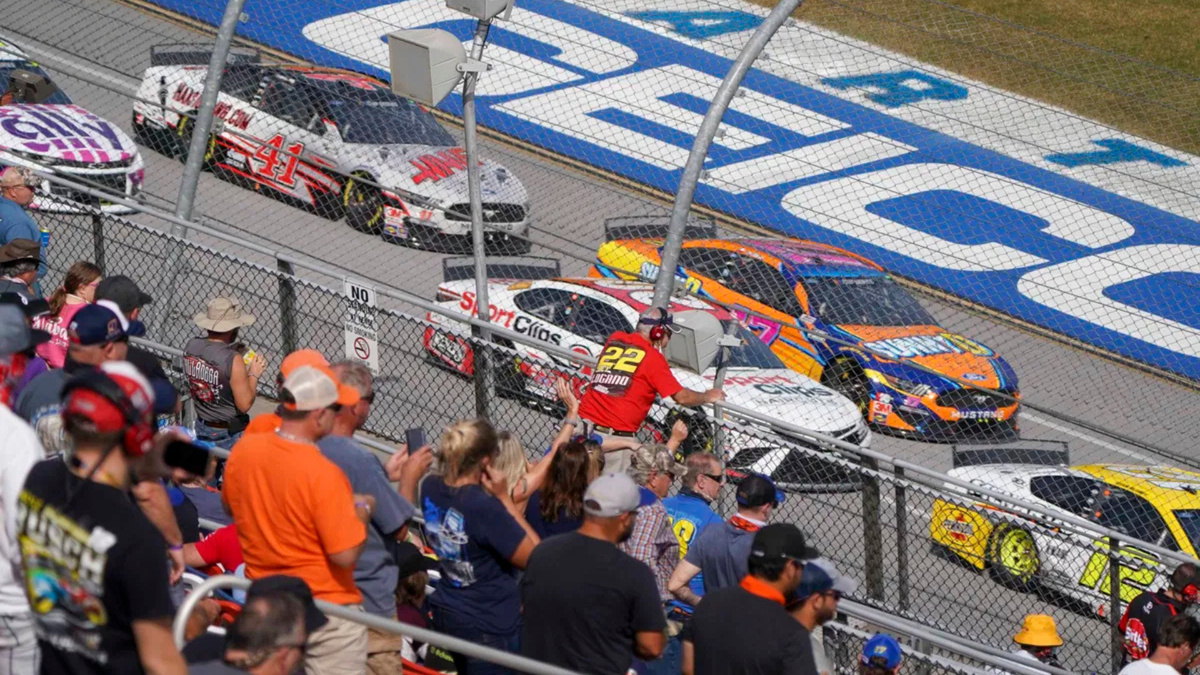

One of the most caution-heavy races of the 2025 NASCAR season unfolded earlier this year at Atlanta Motor Speedway, where the Ambetter Health 400 featured a staggering 11 cautions covering 63 laps, the highest total before Iowa this season. The chaos-filled afternoon had 50 lead changes among 15 drivers as Christopher Bell eventually grabbed the victory. But it was just the start of a pattern of spiraling caution flags that would soon define the season’s middle stretch.
Watch What’s Trending Now!
Fast forward to Iowa Speedway, where the pattern reached the boiling point. The Iowa Corn 350 surpassed Atlanta’s caution count, replaying the same relentless interruptions; only this time, fans reached a new level of frustration. The NASCAR community didn’t waste time letting their thoughts be known. Social feeds lit up with sarcasm and memes, as viewers compared the night’s action to street stock mud flings and even ARCA.
ADVERTISEMENT
Iowa Speedway’s caution-filled race saw the most yellow flags in the 2025 season
What made Iowa’s caution parade stand out wasn’t just the number of incidents but how random and disruptive they felt. Beyond the usual spins, they have bizarre moments, like a driver’s side window panel falling out of track, prompting an unexpected yellow and loose debris from earlier scrapes, triggering more slowdown. Even seasoned veterans like Denny Hamlin found themselves caught up in the minor chaos, while restarts on the narrow layout seemed to breed trouble as the mid-pack stacked up.
The Iowa Corn 350 turned into a test of endurance and patience, with a staggering 12 cautions slowing the field for 72 laps before the race entered its final 35 laps. It started as a largely clean opening stage, led by William Byron’s No. 24 Chevrolet, but it quickly shifted into chaos as the second half unraveled. Spins from Shane Van Gisbergen, Ty Dillon, and Denny Hamlin mixed the debris caution and multicar tangles, like the Christopher Bell-Tyler Reddick incident in Turn 2, repeatedly resetting the running order. Each restart brought fresh drama, with drivers like Chase Briscoe, Austin Cindric, and Ryan Blaney trading the lead only to see their momentum halted by yet another yellow flag.
The stop-and-go nature of the race tested the pit strategy as much as it tested driver focus. Crews scramble to adjust on pit road during every caution, some opting for a track position gamble while others go for fresh tires to survive the attrition. By the 12th caution on lap 284, William Byron had reclaimed control, but his lead was anything but secure; each restart punched the field and ignited intense battles behind him. Only 35 laps left; the constant interruptions set the stage for a tense, unpredictable finish where track position, tire wear, and sheer composure would determine who could finally break free from the chaos and claim victory.
ADVERTISEMENT
Oh geez. Someone’s side window fell out.
— Jeff Gluck (@jeff_gluck) August 3, 2025
NASCAR fans lit up social media with a mix of humor and exasperation as the yellow flags kept flying at Iowa. Some joke that it was “Possibly the most frustrating race to watch all season,” while another quipped, “Did the Iowa Corn growers pay of extra cautions cause the flag is yellow?” The stream of caution even had one fan comparing it to a local bullring, writing, “This feels like a Saturday night street stock car with all the cautions,” while another sarcastically noted, “NASCAR probably loves what they are seeing.” But perhaps the sharpest jab came from fans calling, “This is worse than ARCA,” a slinging critique that summed up just how chaotic and disjointed the night felt from the grandstands and couches alike.
ADVERTISEMENT
The cautions proved to be beneficial for some, including race winner William Byron. Byron’s fuel-saving strategy played the central role. As caution mounted, Byron and his team adjusted pit timing to stretch fuel over the final 140 laps using frequent yellows to avoid green flags. That tactic meant trading pure speed for caution-induced mileage, but it also ensured the race state caution was heavy right to the end; each yellow flag became a tactical tool for both his crews and NASCAR’s race control to tightly manage the final sprint. Moreover, these cautions helped to time Series champion Kyle Busch, despite his frustration at his shot at the playoffs, into the top 20.
Top Stories
Footage Surfaces of Florida Police Arresting NASCAR Veteran Over Disturbing Public Misbehavior

Horrific Aerial Footage of Greg Biffle’s Fatal Crash Emerges Leaving NASCAR Community in Tears

Another Almost Fatal Disaster Surfaces From Statesville Airport Amidst Ongoing Greg Biffle’s Crash Investigation

Donald Trump Issues Moving Message of Condolence for NASCAR’s Greg Biffle & Family During North Carolina Address

NTSB Appeals for Greg Biffle’s Wife’s Alleged In-Flight Text Messages as Crash Investigation Heats Up

How a caution-filled race saved Kyle Busch’s weekend
Kyle Busch’s weekend at Iowa Speedway nearly unraveled in practice when his No. 8 Chevrolet slammed hard into the turn 1 wall after he lost grip over rear chatter, eliminating his primary car and relegating him to start 37th in a backup car, literally dead last in the Cup field. It was a harsh blow for a competitor 81 points below the playoff cut-off, desperate for a win to keep postseason hopes alive.
ADVERTISEMENT
That’s where Iowa’s endless stream of caution flags flipped Busch’s fate. Each yellow flag punched the field and erased green flag gaps, letting him chip through the order with minimal long runs. Instead of chasing down packs under the green, he was gifted resets ceaselessly, giving him repeated opportunities to gain positions on restarts.
Pit stop timing during the cautions also worked in Kyle’s favor. Multiple cautions allowed his crew to diverge from the standard green flag pit strategy, swapping adjustments and fresh tires without losing as much ground. He gained track position incrementally by avoiding green flag stops and moving forward on each wave around, highlighting how the stop and rhythm helped drivers in the mid and back pack.
By race’s end, Busch salvaged a 20th-place finish, spotlighting an effective salvage mission from rock bottom to the upper pack. Considering he started last and contended with a hobbled backup car, the result underscored how a veteran can capitalize on a caution-heavy script, turning calamity into controlled recovery. Even if they didn’t finish in the top five, it was miles ahead of where he began.
ADVERTISEMENT
ADVERTISEMENT
ADVERTISEMENT
ADVERTISEMENT

